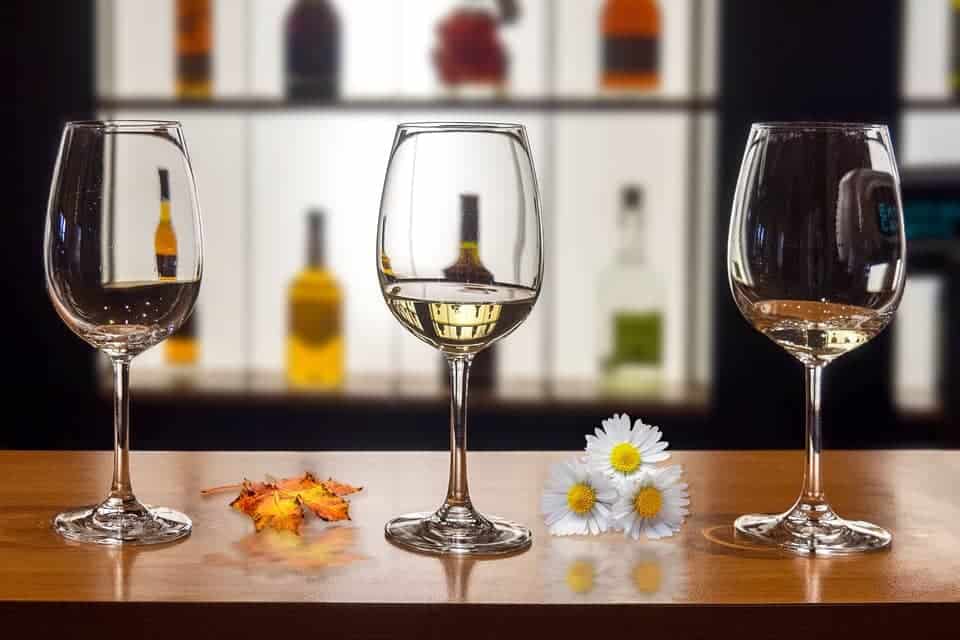

Some classic food pairings for dry white wines include Chardonnay with seafood in a buttery sauce, New Zealand Sauvignon Blanc with asparagus and Gewürztraminer with mild, Indian curries such as chicken korma. For example, oaked Chardonnay with grilled chicken, un-oaked Chardonnay with poached chicken. Pair the wine based on the preparation style and sauces, rather than the type of protein.Match the intensities of the wine and food-delicate with delicate, strong with strong.Pair full-bodied wines with full-bodied foods.If there’s wine in the dish, pour the same wine or one that’s very similar.But here are general guidelines that will make good pairings easy: For delicate, very gently cooked dishes that you’d like to accent with aromatics, such as steamed fish, consider an aromatic variety like Muscat.įood and wine pairings can get very specific.For foods that include citrus or herbs, consider a wine with similar notes, such as Sauvignon Blanc.For delicate dishes, use a more delicate wine, such as Pinot Blanc.For rich dishes, such as risotto with or stewed chicken, use a rich but relatively neutral wine, such as Chardonnay or Pinot Gris.Consider matching the personality of the wine to that of the food.The alcohol will evaporate during cooking. Don’t worry about the wine’s alcohol percentage.Nuances will disappear when the wine is heated. The wine doesn’t have to be expensive or complex.

Avoid using wine with strong aromas and flavors of oak.Best dry white wines for cookingįor recipes that call for dry white wine, but don’t name a particular variety or region of wine, you can use most anything. Adding acidity to something sugary reduces our perception of its sweetness as well.

But that balancing of tastes works both ways. Winemakers will often leave a little residual sugar in such a wine to balance a high acidity, so it’s less sour in our mouths. We add sugar to coffee to make it less bitter or to lemonade to make it less sour.Ī wine with very high acidity and some residual sugar, such as some German Rieslings, can taste drier than they actually are. Some of those tastes can balance out the others in wine as well as in food. Our tongues perceive five basic tastes: sweet, salty, sour, bitter and umami. Why does some white wine taste dry when it contains sugar? Napa Valley, Columbia Valley, Southern France and Greece are just a few regions that have long, warm, sunny growing seasons. When we drink a very fruity wine then, our brains may think “sweet” even if the wine is actually bone dry.Īll these factors-high alcohol, notable glycerol and substantial fruitiness-are most common in wines made from grapes grown in regions with long, warm, sunny growing seasons where grapes have the chance to become very ripe and have more sugar to convert into alcohol. That’s because our brains associate fruit with sugar and expect fruity-tasting things to be sweet. It, too, can create the perception of slight sweetness.įinally, very fruity wines may seem sweet. Glycerol (aka glycerin) is a trace by-product of fermentation and contributes viscosity to wine. Alcohol tastes sweet so wines with an alcohol percentage above 14% or so may be perceived as being a little sweet. But, so can some other things in wine that are not sugar at all. Why does some dry white wine taste sweet?

Any sugar that isn’t fermented into alcohol is called “residual sugar” or RS. Normally, wine “ferments until dry,” meaning all the sugar has been consumed. During fermentation, yeast consume the juice’s sugar and produce alcohol. So, a glass of dry white wine will contain no more than two grams of sugar. Note that a generous, restaurant pour of wine is 187ml, one quarter of a standard bottle. They would refer to wine that has more than one gram, but less than nine, as “off-dry.” Wines that have no sugar at all are often referred to as being “bone dry.” Dry wine vs. To them, dry wines have no more than one gram per liter of sugar. Wine professionals define dry wine more specifically. In practice, however, most dry wines contain much less. No laws in the United States dictate how much sugar a dry white wine may have, however in the EU, a dry wine may have up to nine grams of sugar per liter. Dry wines are the opposite of sweet wines. Dry white wine is white wine that contains little or no sugar.


 0 kommentar(er)
0 kommentar(er)
